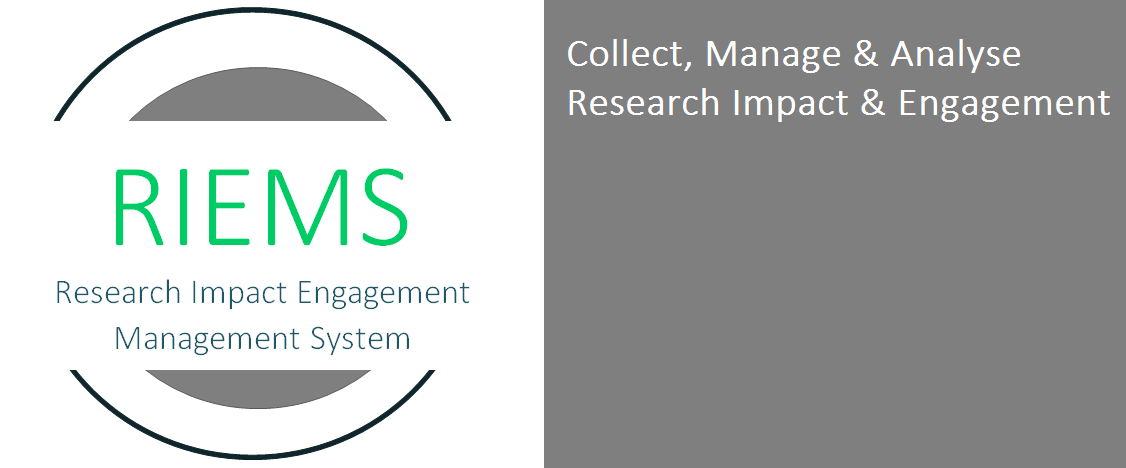Research Impact Engagement Management
Capturing engagement, pathways to impact and the research impact itself is essential for institutions wishing to demonstrate the benefit of their research – compounded by the fact that the benefits may be economic, societal, cultural, policy environmental or enhancements to quality of life. These elements are often seen to be beyond the scope of traditional administration systems.
WHY COLLECT/MANAGE IMPACT/ENGAGEMENT?
Capturing the societal impact of research is becoming an essential component of the research enterprise. Institutions wish to understand the benefits, or impacts of their research for many purposes including:
- Showcasing the benefits of research to local communities and other stakeholders;
- Communicating and advocating the importance of research and innovation in ensuring Australia’s prosperity and well-being;
- Demonstrating to the Australian government, taxpayers and others, the wise and accountable use of public funds and
- Building support for further investment in research.
And yet, to track and capture pathways from research to research impact is not a simple exercise. Research impact is often multidisciplinary, involves many partners and takes many different pathways.
Capturing engagement, pathways to impact and the research impact itself is essential for institutions wishing to demonstrate the benefit of their research – compounded by the fact that the benefits may be economic, societal, cultural, policy environmental or enhancements to quality of life.
Many institutions are realising that the key to understanding their engagement and impact activities is to capture details of such activities – regularly and consistently! Yet, most current research information management systems can track research inputs and outputs, but struggle to track activity beyond research outputs, i.e. engagement and impact.

RIEMS removes the complexity and difficulty in the process by:
- providing a simple, quick and easy to solution with no major impost on the institution’s scarce IT resources,
- having the impact (and engagement) linked to Australian classification indexes such as FORs and SEOs,
- including provisions to document evidence associated with impact,
- allowing information to be collected once (and only once) from the most appropriate source,
- being cost effective and have minimal resource requirements,
- providing a flexible, centrally managed solution that can provide an adaptable workflow provision,
- allowing for rapid development of evolving reporting requirements and analysis facilities,
- ensuring data is based in Australia and therefore covered under Australian Privacy Laws. (European & North American hosted versions in 2017),
- providing a secure and reliable repository to begin the challenging tasks associated with the management of research engagement and impact.
WHY USE RIEMS?
RIEMS system provides a cost effective solution for collecting and managing all data related to research impact and engagement. Even if your institution is planning to develop an 'in-house' system, RIEMS can facilitate the data collection process in the interim. Once your system is ready, data collected in RIEMS can be easily extracted for use in your internal database.
- Australian developed with Field of Research and Socio Economic Objective classification codes already available to be linked and included.
- Optional upload of your own institution's research data to reduce data replication and improve data integrity
- Flexible workflow options with both central and distributed entry and verification provided
- Cloud based so minimal impact on your institution's scarce IT resources
- Tabular and chart based outputs
- Benchmarking facility with other institutions or internal organisational units
- Over 50 analyses provided as standard
- Data export available for further analysis of data or inclusion into other systems
- Consultation service available with VIP-Research to identify and understand impact and its pathways and best practice for recording of impact.
- Provision to link document evidence associated with impact
- Operates on the Azure platform which was the first public cloud system in Australia to pass the Australian Signals Directorate (ASD) Industry Security Registered Assessor Program (IRAP) compliance assessment. It has also committed to annual certification for ISO/IEC 2701:2005 which represents a series of internationally recognised information security controls to ensure client cloud data is maintained at the international security levels.
Graphical dashboard keeps all users up to date.
Case Study & Indicator analysis by discipline
Underpinning research details provides a full picture of the pathway to impact
